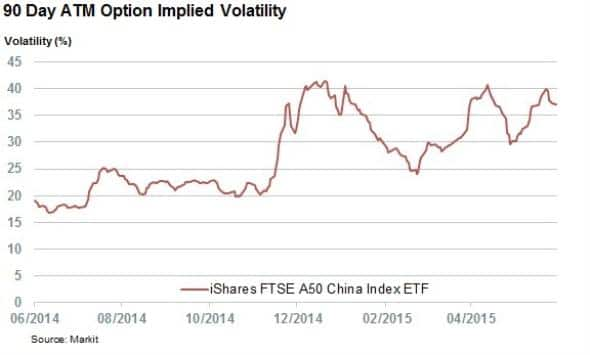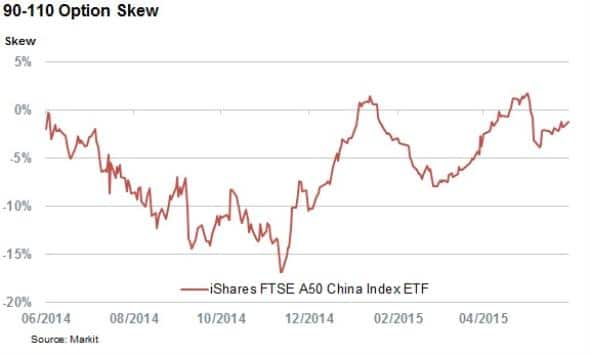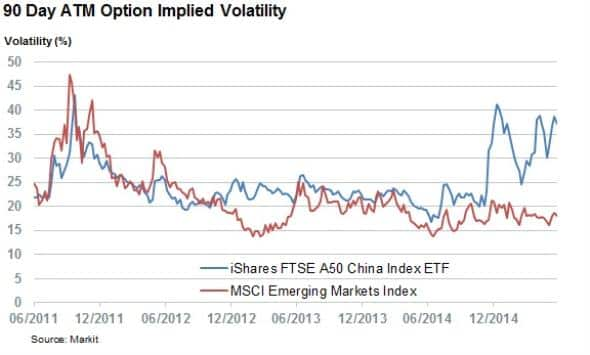Chinese stocks too hot to handle
Chinese stocks were passed over for ascension to the MSCI world index last week; a move that came as little surprise in the wake of the recent market volatility.
- Implied volatility of 90 day ATM options written against the A50 index has doubled in the last 12 months
- Investors are using options to protect against price falls in the wake of the recent strong run
- Chinese A shares now have twice the implied volatility of corresponding MSCI Emerging Market Index option
Last week saw the MSCI's yearly market classification review pass on admitting China into its emerging market section for near term. Although the index provider largely focused on ongoing technical issues such as capital quota, liquidity and ownership rules as its main roadblock for inclusion this year, the recent volatility of the country's stocks must have played a part.
This is particularly relevant given that a decision to the contrary could have seen international investors commit to purchase billions of dollars' worth of Chinese equities - at a time when talk of a possible Chinese equity bubble are growing louder.
While the cause for the recent surge in Chinese equity remains unclear, investors are treating Chinese equities with increased caution in the wake of the recent price surge.
Volatility jumps
The shaky base on which Chinese equities currently stand is best exemplified by the options written against the iShares FTSE A50 China Index ETF, which has seen its implied volatility surge in the last 12 months according to Markit Daily Volatility.

90 day at the money (ATM) options for the ETF, which had been one of the best ways to gain exposure to mainland Chinese shares prior to the Shanghai connect, have nearly doubled in the last 12 months to 37% as of latest count. The current levels of implied volatility are hovering around the yearly highs seen in the opening week of January.
This recent surge in volatility has seen investors price Chinese A options with the highest amount of implied volatility since October 2011, during which Chinese shares were in the midst of a bear market.
Skew showing increasing weariness
The shape of options term structure also indicates that investors are increasingly wary of Chinese A shares. Just before to the surge in volatility, investors were paying a 15% more for 10% out the money calls than corresponding than for similarly out the money puts. Such a skew indicates that option market participants were more concerned with capturing potential upside than protecting against a market selloff.

This phenomenon has since reversed and investors have in fact been paying a premium for downside protection in May.
Chinese volatility exception
The spike in option volatility seen Chinese shares runs against the wider emerging market, as gauged by options tracking the MSCI Emerging Market index.

90 day ATM implied volatility in A shares used to track the wider emerging market index, but the surge in volatility, combined with a fall in the Emerging Market Index means that Chinese A shares now see twice the volatility of the index which recently passed them over for inclusion.
Simon Colvin | Research Analyst, Markit
Tel: +44 207 264 7614
simon.colvin@markit.com
S&P Global provides industry-leading data, software and technology platforms and managed services to tackle some of the most difficult challenges in financial markets. We help our customers better understand complicated markets, reduce risk, operate more efficiently and comply with financial regulation.
This article was published by S&P Global Market Intelligence and not by S&P Global Ratings, which is a separately managed division of S&P Global.